
!!BEST
SELECTION OF LEARNING MATERIAL, BOOKS AND DVDs on CEE!!
The
Balkan Region
This is
the Balkan region and this is the mountain range, to which
it owes its name.
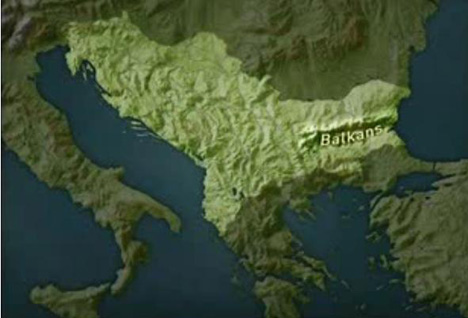
With the
exception of Albania and Bulgaria, the countries of the region
from 1945 to 1991 formed a federation, the former Yugoslavia,
the country of southern Slavs.
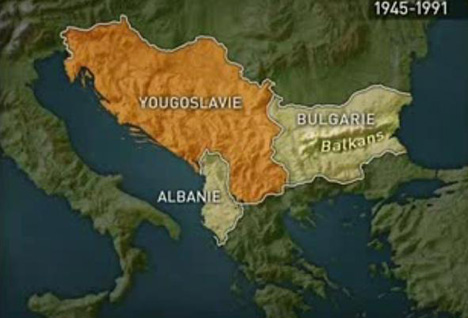
When Yugoslavia
broke up in 1991, 5 new countries were created: Slovenia,
Croatia, Bosnia Herzegovina, Macedonia and the rest of Yugoslavia,
namely Serbia and Montenegro.
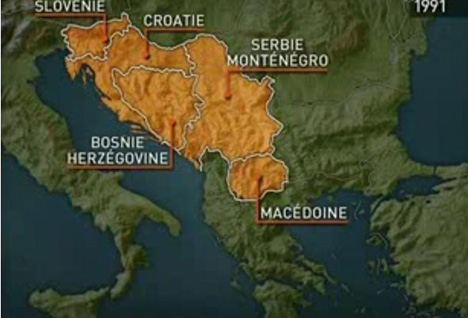
How
are these countries doing today? Bosnia Herzegovina is located
in the heart of the Balkans and is almost a landlocked country.
It has only access to the Adriatic Sea through the port of
Neum. The country is 50,000 square kilometers big and has
4 million inhabitants.
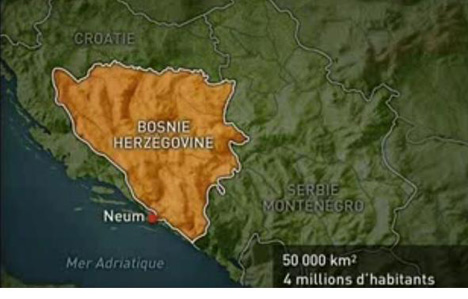
Since
the Dayton agreement of 1995, it is a confederation of two
Entities: the Bosniac-Croat Federation, which occupies 51%
of the territory, and the Serb Republic, which occupies the
remaining 49%.
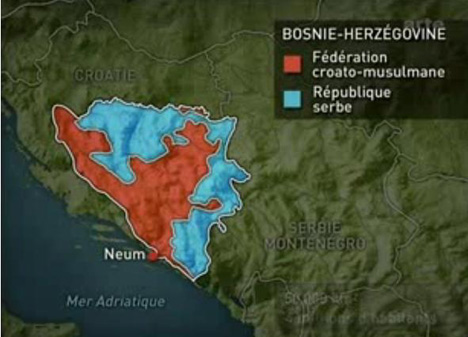
Foreign
policy and foreign trade are subject to central government,
but each unit has its own constitution, its own army, its
own police force and determines its relations with its immediate
neighbors. Therefore, the Bosniak-Croat Federation has of
course a special relationship with Croatia. And the Serb Republic
with Serbia and Montenegro.
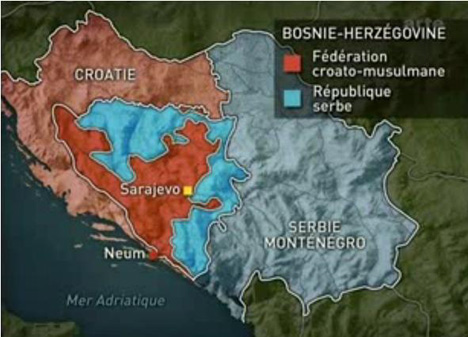
In
addition, both entities tend to neutralize each other by preventing
decisions, which would need mutual agreement. And the three
ethnic groups in the country turn their back to each other.
The
Bosnianpopulation consists of 43% Bosniaks, 31% Serbs and
17% Croats. The three ethnic groups are now going separate
ways both socially, economically and politically. This goes
so far that in the parliamentary election in October 2002,
each group voted for nationalist politicians. The Croatian
nationalists declared the Croatian regions of the Bosnian-Croat
Federation autonomous. Thus, Bosnia now consists no longer
of two, but rather of three parts.
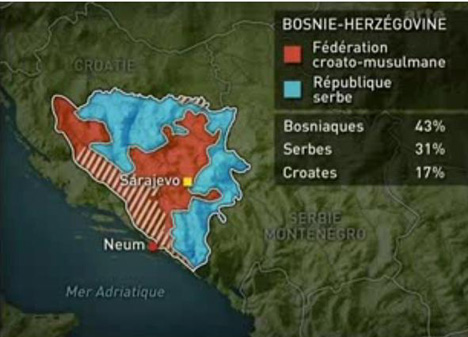
Since
the end of the war, the efforts in bringing the communities
closer together did not succeed. The unity of the Bosnian
territory, and probably also the peace, is ultimately ensured
through the presence of a High Representative of the United
Nations, who shall exercise the real power in Sarajevo. Furthermore,
through 12 000 soldiers of the NATO Stabilisation Force and
the EU police forces. Overall, Bosnia is thus monitored, controlled
and virtually kept alive artificially. Because public expenditures
are financed by international organizations in practice. Bosnia
is still the poorest country in Europe. Unemployment stands
at 40% and the country suffers from corruption and organized
crime. Bosnia's basic problem is the fact that the three ethnic
groups no longer want to live in one state. The international
community, however, prefers the unsatisfactory status quo
even more than a redefinition of the borders.
For by the fragmentation of the region would only increase,
with the absurd result that every ethnic group would get their
own state, and the carried out ethnic cleansing during the
war would be justified in retrospect.
Serbia
and Montenegro, with its 8 million inhabitants, is the most
populous country in the Balkans. Since the fall of Milosevic
in late 2000, reforms have been initiated and Serbia receives
international financial assistance and loans from the IMF.
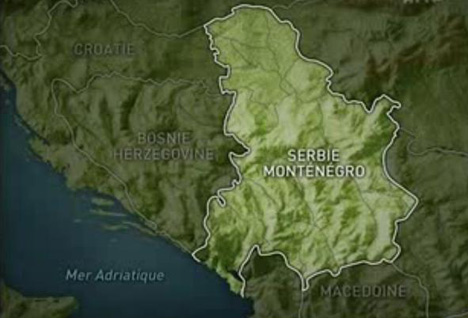
In
Serbia there are problems in relations between the capital,
Belgrade, Vojvodina, Kosovo and Montenegro.
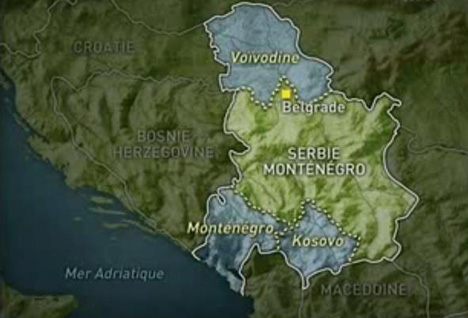
In
the northern province of Vojvodina there live 27 ethnic groups,
mainly Serbs, but also Hungarians, Croats, Slovaks and Romanians.
The main regional parties, especially the Hungarian demand
a return to the autonomous status, which was available to
the province before it was abolished in 1989 by Milosevic.
Also in the Serbian province of Kosovo Albanians represent
90% of the population. Since the NATO attacks in 1999 that
haulted the massacres of Kosovo Albanians by the Serbian Army,
the province is under the administration of the United Nations.
Its safety is ensured by the 21,000 soldiers of KFOR. Although
Kosovo legally remains part of Serbia, in fact provisional
institutions were formed and the management of the budget
and taxes was handed over to local authorities. For the Albanian
majority, this means that they are moving towards the desired
independence of Kosovo. This is feared by the Serbs that make
up nearly 10% of the population of Kosovo and who prefer a
new definition of the borders.The area populated by a majority
of Kosovo Serbs would be annexed to Serbia and the Albanian
part of Kosovo would get the Presevo Valley, where the Albanians
are the majority, but would remain within Serbia.
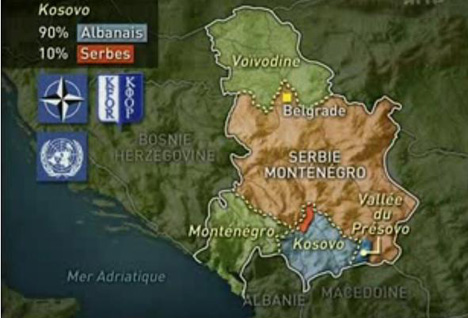
In
the meantime, the international community takes care of the
situation and it becomes clear why they preferred the status
quo. In Kosovo there is still no stability, which becomes
clear on the regional scale. An independent Kosovo would have
serious consequences. For Bosnia, the Serbs could ask the
Serb Republic's annexation to Serbia. And for Macedonia with
its significant Albanian minority.
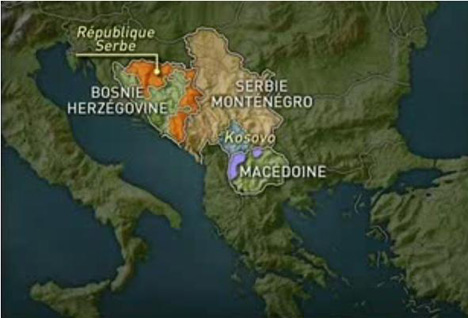
Macedonia
is 26,000 square kilometers and has 2 million inhabitants.
Of these, one quarter are Albanians who live mainly in the
north and west. And they might also require to form an independent
state to be affiliated with the Kosovo Albanians or with all
Albanian people of the region.
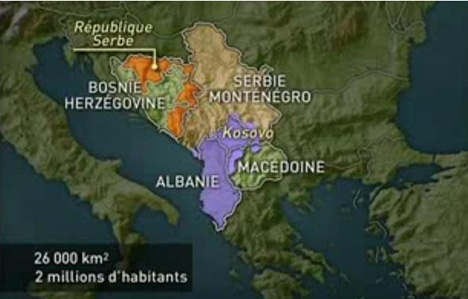
2001
Albanian rebels had demanded more rights for Albanians in
Macedonia. Only through the swift deployment of 3,500 NATO
soldiers the militias could be disarmed and a peace agreement
be concluded that granted the Albanians more rights. Especially
in the field of language and school education. Besides, the
country name of Macedonia has to be changed. Since 1991, people
in Greece believe the term "Macedonia" dates back
to Alexander the Great, and is part of Greek heritage. It
is now clear why the EU has insisted that Montenegro to stay
together with Serbia and renounces independence. They wanted
to avoid a perpetual dismemberment of Yugoslavia.
Disclaimer:
Please note that this text might not reflect latest developments.
It is originally in German language and has been automatically
translated.
|